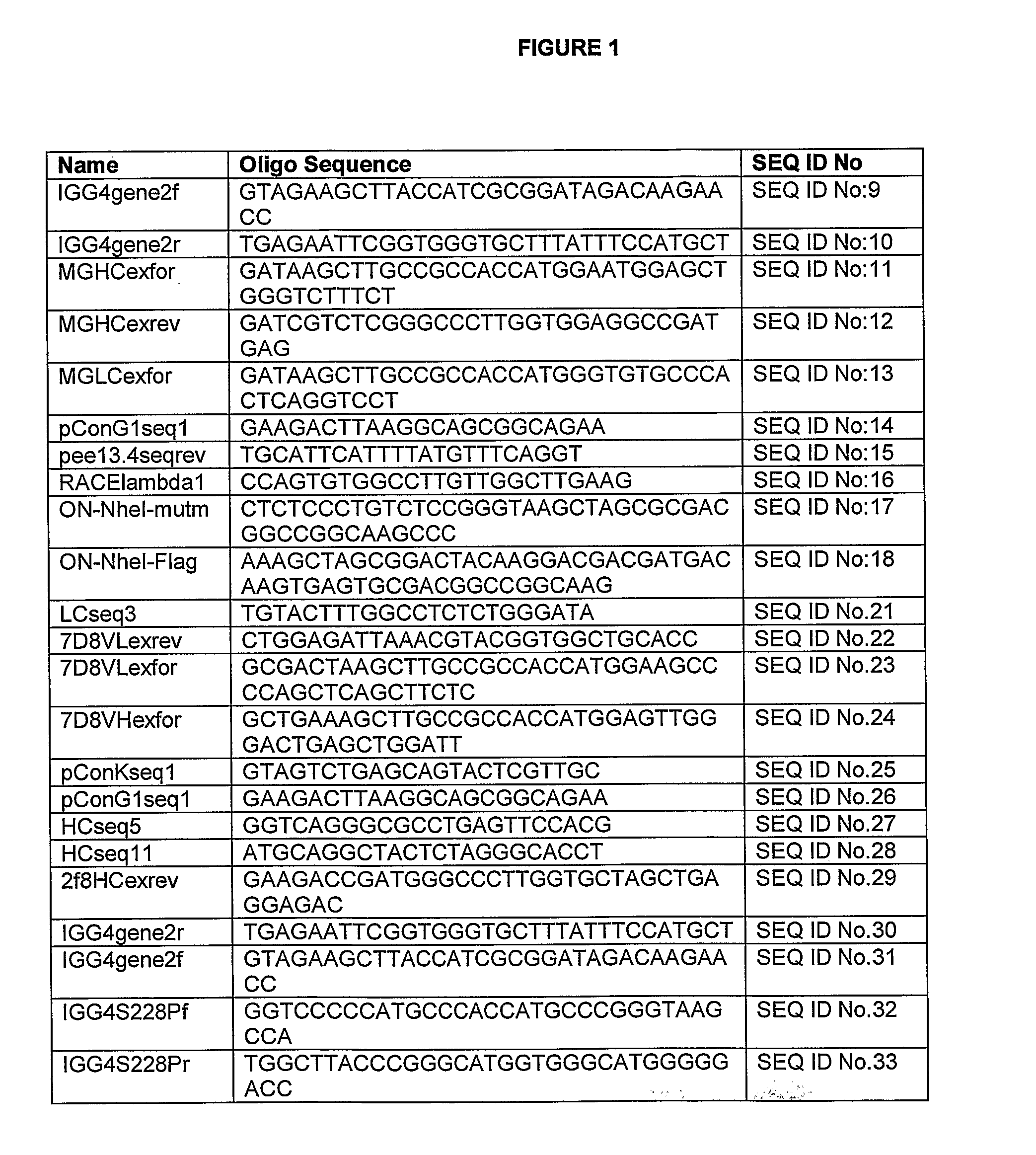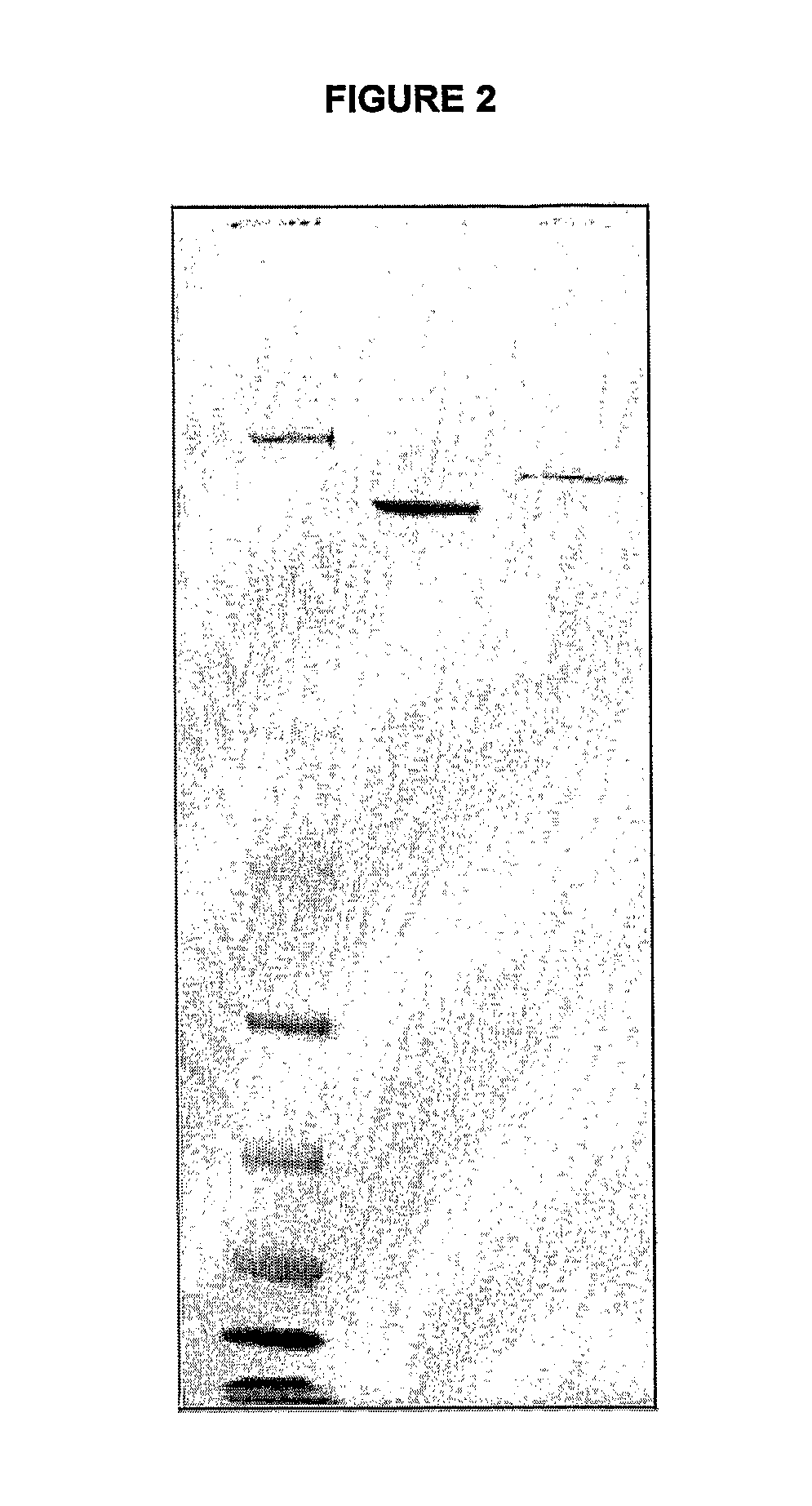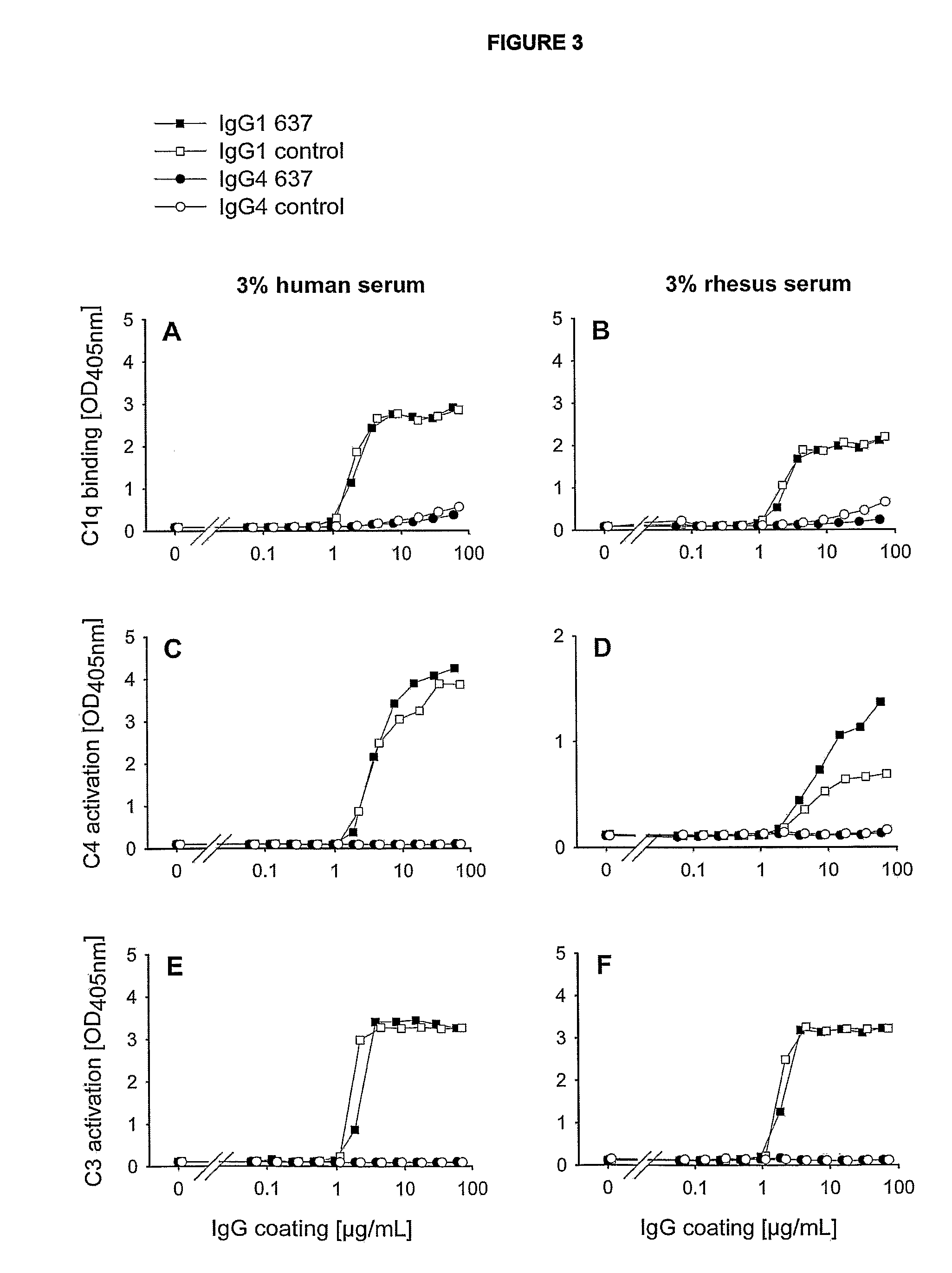Use of effector-function-deficient antibodies for treatment of auto-immune diseases
a technology of effector function and antibodies, applied in the field of auto-immune diseases and disorders by administration of antibodies, can solve the problems of reversible muscle weakness that lasts for several days, fluctuating skeletal muscle weakness, and impaired neuromuscular transmission, and achieve the effect of preventing the pathogenic effect of anti-achr antibodies
- Summary
- Abstract
- Description
- Claims
- Application Information
AI Technical Summary
Benefits of technology
Problems solved by technology
Method used
Image
Examples
embodiment 55
[0121]In a main embodiment, the invention relates to the use of an antibody for the preparation of a pharmaceutical composition for treatment of an antibody-mediated auto-immune disease or disorder in a subject, wherein said antibody is capable of competing with one or more of the auto-antibodies involved in mediating the antibody-mediated auto-immune disease or disorder for binding to a target auto-antigen, and wherein said antibody is a monovalent antibody comprising a light chain and a heavy chain, wherein[0122]a) said light chain comprises the amino acid sequence of the variable (VL) region of a selected antigen specific antibody and the amino acid sequence of the constant (CL) region of an Ig, and wherein, in case of an IgG1 subtype, the amino sequence of the constant (CL) region has been modified so that it does not contain any amino acids capable of participating in the formation of disulfide bonds or covalent bonds with other peptides comprising an identical amino acid seque...
example 1
Generation of IgG1-637 and IgG4-637
[0332]Oligonucleotide Primers and PCR Amplification
[0333]Oligonucleotide primers were synthesized and quantified by Isogen Bioscience (Maarssen, The Netherlands). Primers were dissolved in H2O to 100 pmol / μl and stored at −20° C. A summary of all PCR and sequencing primers is tabulated in FIG. 1. For PCR, PfuTurbo® Hotstart DNA polymerase (Stratagene, Amsterdam, The Netherlands) was used according to the manufacturer's instructions. Each reaction mix contained 200 μM mixed dNTPs (Roche Diagnostics, Almere, The Netherlands), 6.7 pmol of both the forward and reverse primer, 100 ng of genomic DNA or 1 ng of plasmid DNA and 1 unit of PfuTurbo® Hotstart DNA polymerase in PCR reaction buffer (supplied with polymerase) in a total volume of 20 μl. PCR reactions were carried out with a TGradient Thermocycler 96 (Whatman Biometra, Goettingen, Germany) using a 32-cycle program: denaturing at 95° C. for 2 min; 30 cycles of 95° C. for 30 sec, a 60-70° C. gradi...
example 2
Purification of IgG4-637 Antibody
[0370]IgG4-637 was purified from tissue culture supernatants. First the supernatants were filtered over 0.20 μM dead-end filter. Then, the supernatant was loaded on a 5 ml Protein A column (rProtein A FF, Amersham Bioscience) and eluted with 0.1 M citric acid-NaOH, pH 3. The eluate was immediately neutralized with 2 M Tris-HCl, pH 9 and dialyzed overnight to 12.6 mM sodium phosphate, 140 mM NaCl, pH 7.4 (B. Braun, Oss, The Netherlands). After dialysis samples were sterile filtered over 0.20 μM dead-end filter.
[0371]Samples were tested on concentration of IgG by nephelometry and absorbance at 280 nm.
PUM
| Property | Measurement | Unit |
|---|---|---|
| Time | aaaaa | aaaaa |
| Concentration | aaaaa | aaaaa |
| Dimensionless property | aaaaa | aaaaa |
Abstract
Description
Claims
Application Information
 Login to View More
Login to View More - R&D
- Intellectual Property
- Life Sciences
- Materials
- Tech Scout
- Unparalleled Data Quality
- Higher Quality Content
- 60% Fewer Hallucinations
Browse by: Latest US Patents, China's latest patents, Technical Efficacy Thesaurus, Application Domain, Technology Topic, Popular Technical Reports.
© 2025 PatSnap. All rights reserved.Legal|Privacy policy|Modern Slavery Act Transparency Statement|Sitemap|About US| Contact US: help@patsnap.com



